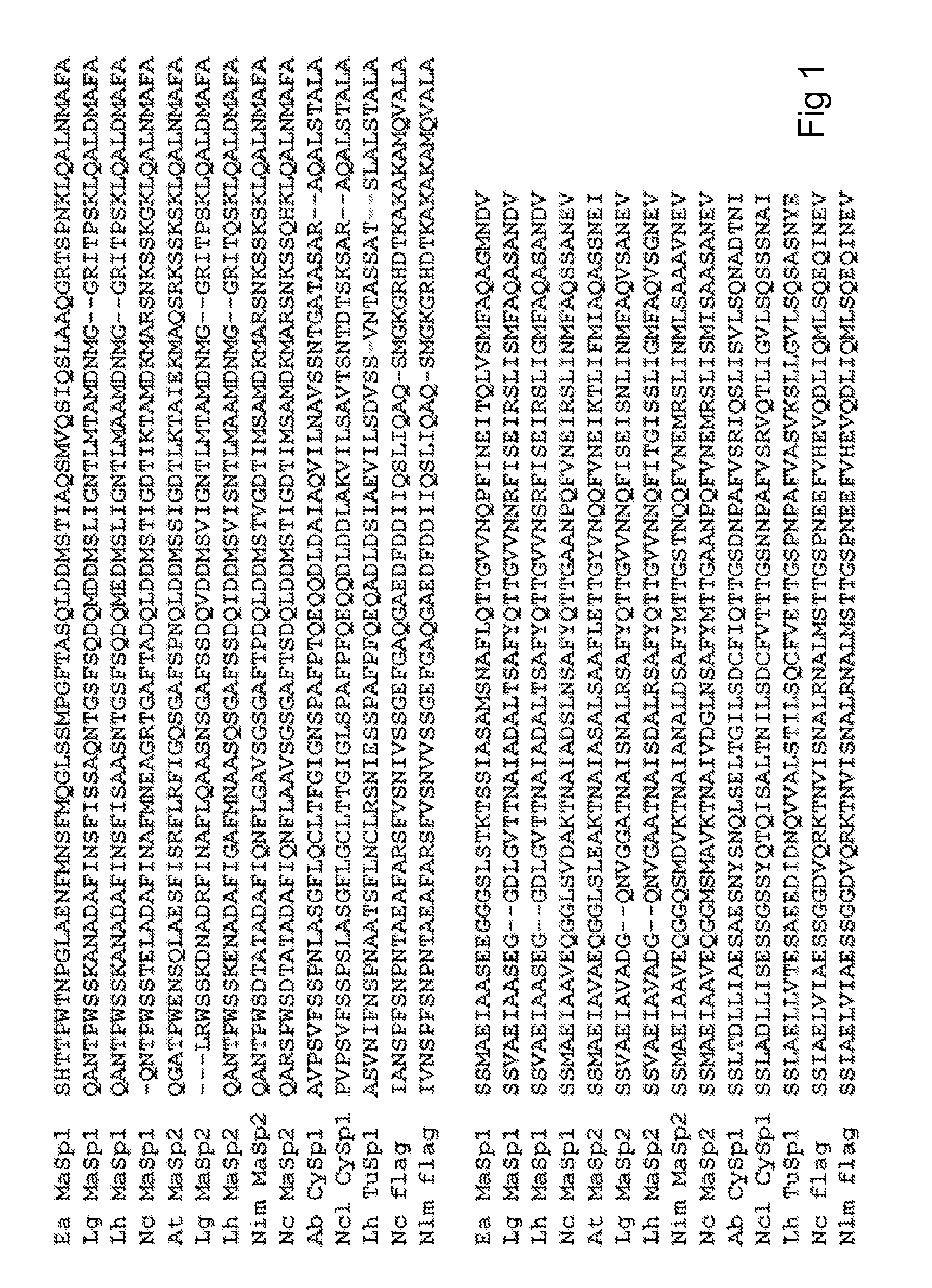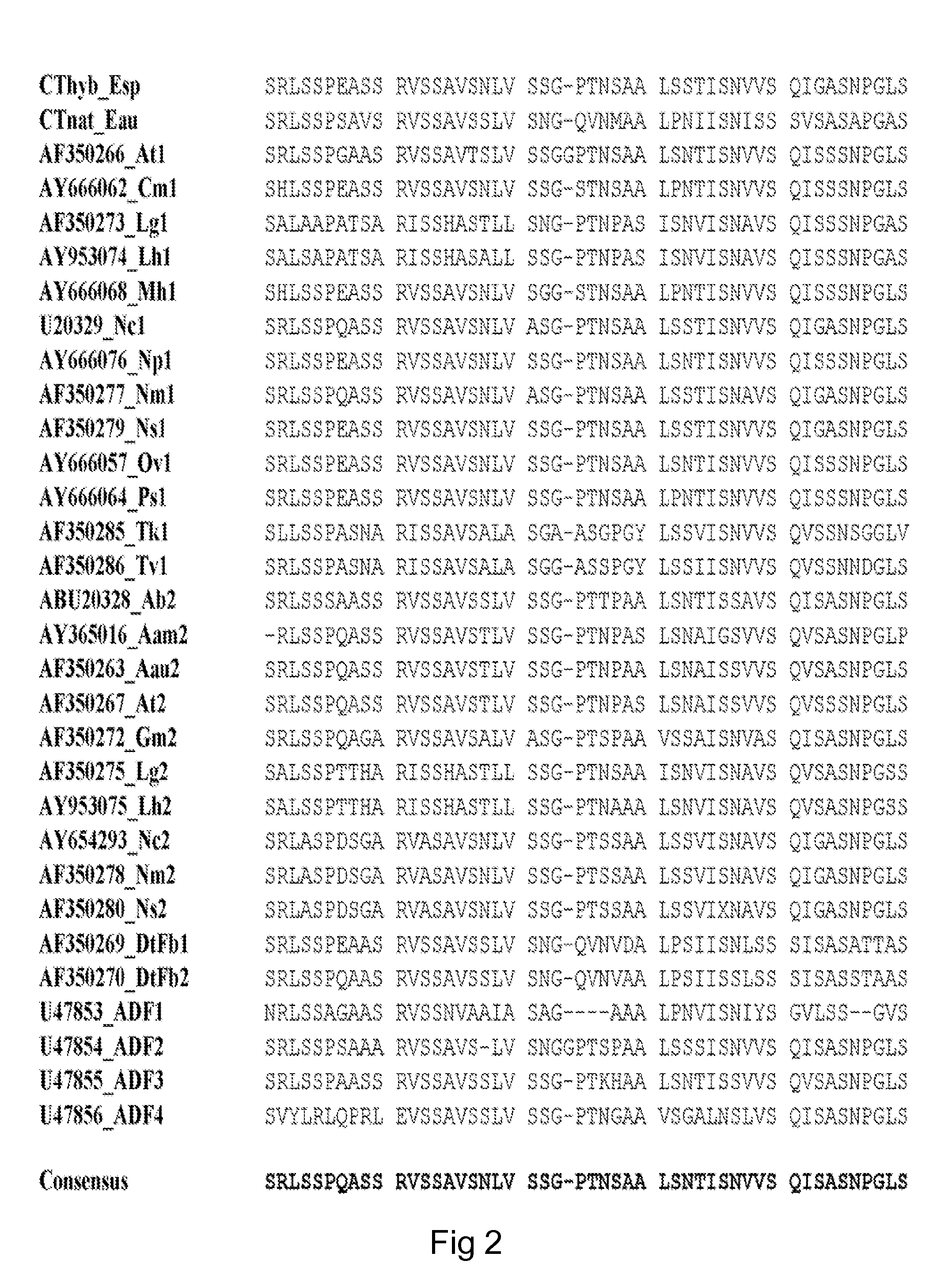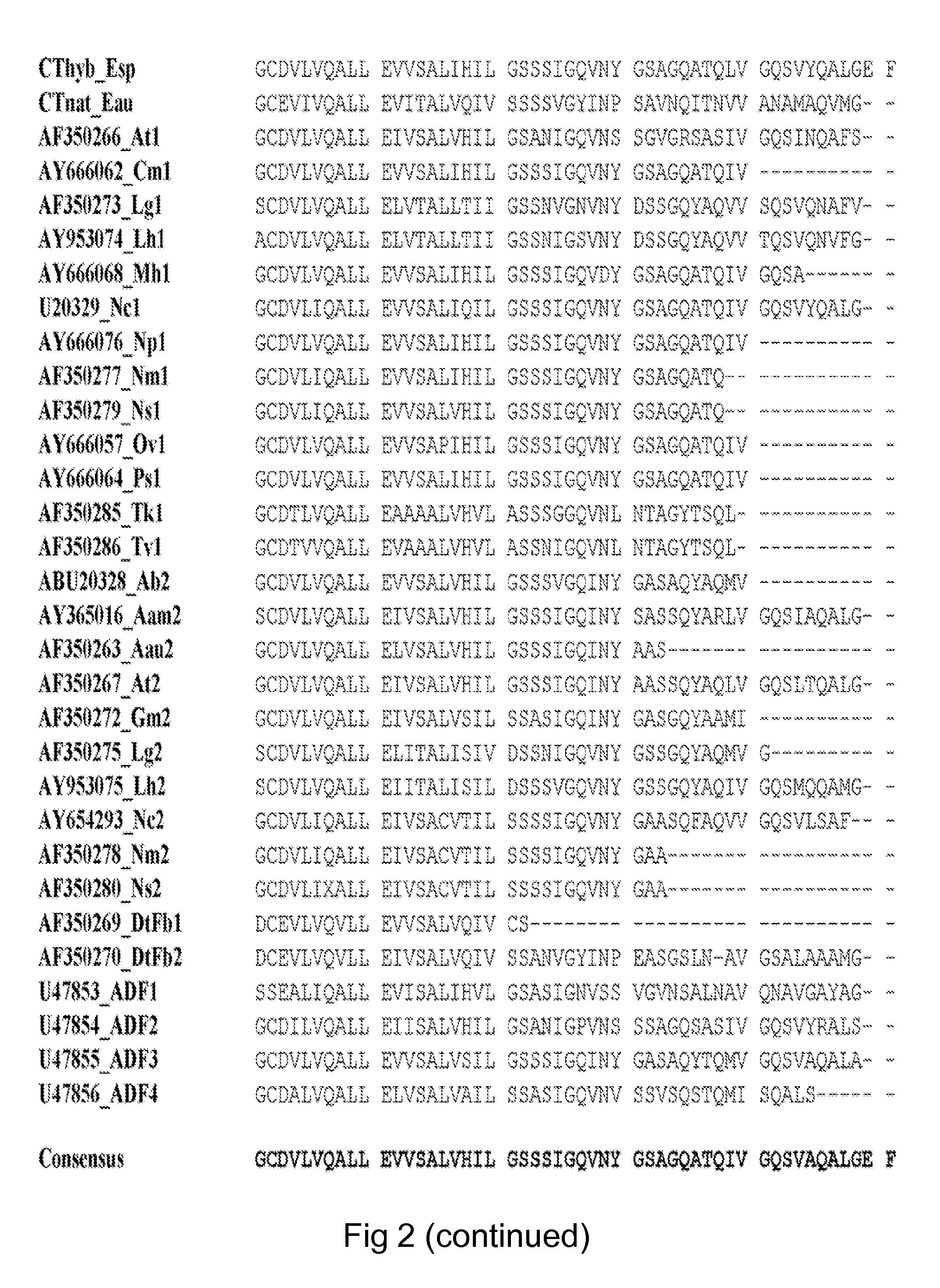Production of proteins and polypeptides
a technology of proteins and polypeptides, applied in the field of protein and polypeptide production, can solve the problems of insoluble protein/polypeptide aggregate formation, severe impede or even prevent the production of functional protein/polypeptide, and neonatal respiratory distress, and achieve high ionic strength and high ionic strength
- Summary
- Abstract
- Description
- Claims
- Application Information
AI Technical Summary
Benefits of technology
Problems solved by technology
Method used
Image
Examples
example 1
Production of an SP-C33Leu Fusion Protein
[0125]An expression vector was constructed comprising a gene encoding NT-MetSP-C33Leu as a fusion to His6 (SEQ ID NOS: 26-27). The vector was used to transform Escherichia coli BL21(DE3) cells (Merck Biosciences) that were grown at 30° C. in Luria-Bertani medium containing kanamycin to an OD600 of 0.9-1, induced with isopropyl-β-D-thiogalactopyranoside (IPTG), and further incubated for 3 hours at 25° C. The cells were harvested by centrifugation and resuspended in 20 mM Tris-HCl, pH 8.
[0126]Lysozyme was added, and the cells were incubated for 30 min on ice. Tween was added to a final concentration of 0.7%. The cells were disrupted by sonication on ice for 5 min, alternating 2 seconds on and 2 seconds off. The cell lysate was centrifuged at 20 000×g for 30 min. The supernatant was loaded on a Ni-NTA sepharose column, equilibrated with 20 mM Tris-HCl, pH 8 buffer containing 0.7% Tween. The column was washed with 20 mM Tris-HCl, pH 8 buffer cont...
example 2
Production of an SP-C33Leu Fusion Protein
[0128]An expression vector was constructed comprising a gene encoding NT2-MetSP-C33Leu (i.e. NTNT-MetSP-C33Leu) as a fusion to His6 (SEQ ID NOS: 28-29). The vector was used to transform Escherichia coli BL21(DE3) cells (Merck Biosciences) that were grown at 30° C. in Luria-Bertani medium containing kanamycin to an OD600 of 0.9-1, induced with isopropyl-β-D-thiogalactopyranoside (IPTG), and further incubated for 3 hours at 25° C. The cells were harvested by centrifugation and resuspended in 20 mM Tris-HCl, pH 8.
[0129]Lysozyme was added, and the cells were incubated for 30 min on ice.
[0130]Tween was either not added or added to a final concentration of 0.7%. The cells were disrupted by sonication on ice for 5 min, alternating 2 seconds on and 2 seconds off. The cell lysate was centrifuged at 20 000×g for 30 min. The supernatants were loaded on a Ni-NTA sepharose column, equilibrated with 20 mM Tris-HCl, pH 8 buffer±0.7% Tween. The column was wa...
example 3
Production of SP-C33Leu Fusion Proteins
[0132]Expression vectors are constructed comprising a gene encoding NT-MetSP-C33Leu, NT2-MetSP-C33Leu and NT-MetSP-C33Leu-NT, respectively. The vectors are used to transform Escherichia coli BL21(DE3) cells (Merck Biosciences) that are grown at 30° C. in Luria-Bertani medium containing kanamycin to an OD600 of 0.9-1, induced with isopropyl-β-D-thiogalactopyranoside (IPTG), and further incubated for 3 hours at 25° C. The cells are harvested by centrifugation and resuspended in 20 mM Tris-HCl, pH 8.
[0133]Lysozyme is added, and the cells are incubated for 30 min on ice. Tween is either not added or added to a final concentration of 0.7%. The cells are disrupted by sonication on ice for 5 min, alternating 2 seconds on and 2 seconds off. The cell lysates are centrifuged at 20 000×g for 30 min.
PUM
| Property | Measurement | Unit |
|---|---|---|
| Fraction | aaaaa | aaaaa |
| Fraction | aaaaa | aaaaa |
| Electric charge | aaaaa | aaaaa |
Abstract
Description
Claims
Application Information
 Login to View More
Login to View More - R&D
- Intellectual Property
- Life Sciences
- Materials
- Tech Scout
- Unparalleled Data Quality
- Higher Quality Content
- 60% Fewer Hallucinations
Browse by: Latest US Patents, China's latest patents, Technical Efficacy Thesaurus, Application Domain, Technology Topic, Popular Technical Reports.
© 2025 PatSnap. All rights reserved.Legal|Privacy policy|Modern Slavery Act Transparency Statement|Sitemap|About US| Contact US: help@patsnap.com



